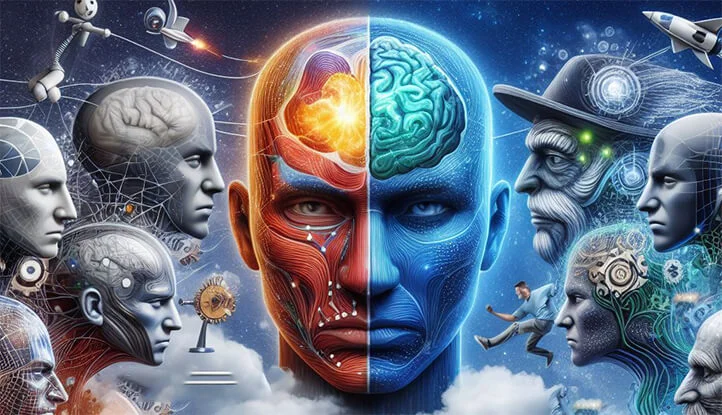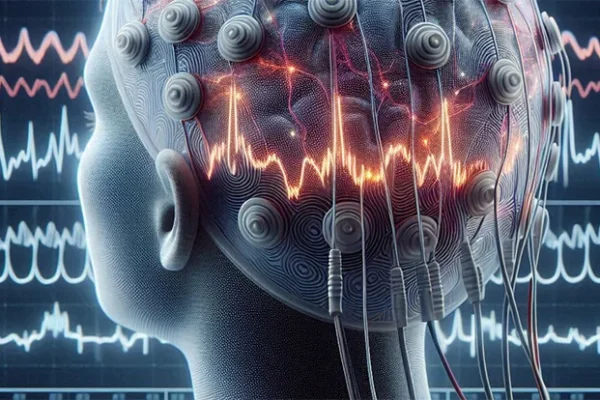Depth Psychology is a set of theoretical approaches and practical methods focused on the study of unconscious processes in the human psyche. This field emerged in the early 20th century, thanks to the works of Sigmund Freud, Carl Gustav Jung, and other prominent figures of the psychoanalytic movement.
The key figures at the origins of depth psychology sought to delve into the deep layers of the human “Self,” to uncover the hidden mechanisms, drives, and conflicts that govern our behavior, emotions, and thoughts. They challenged conventional views on human nature, asserting that much of our psychic life occurs in the unconscious realm.
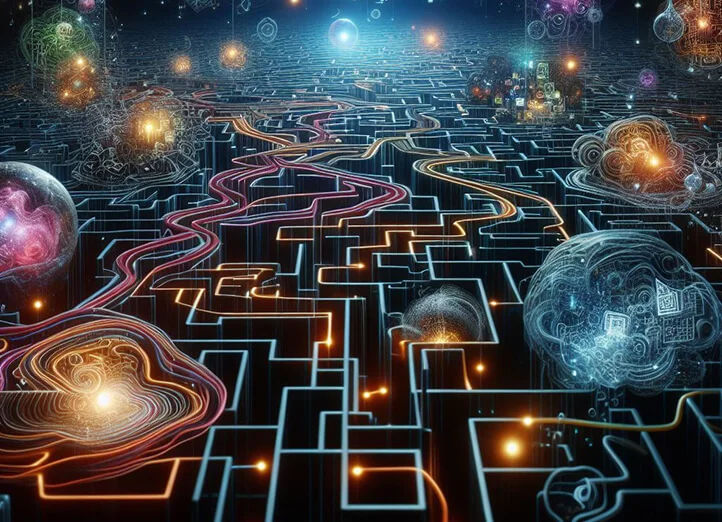
The Unconscious
One of the key concepts highlighting the innovative nature of depth psychology is the notion of the unconscious. For a long time, the dominant belief in Western scientific tradition was that consciousness represents the sole reality of human psychic life. However, Sigmund Freud and his followers challenged this paradigm, arguing that our conscious thoughts, feelings, and actions are merely the tip of a vast iceberg, most of which is submerged in the unconscious.
In Freud’s understanding, the unconscious is the repository of repressed drives, conflicts, and traumatic experiences that exert a powerful but hidden influence on our entire psychic life. Neurotic symptoms, slips of the tongue, dreams, and many other phenomena are viewed as manifestations of these repressed unconscious processes striving to find an outlet.
The introduction of the concept of the unconscious allowed for a new perspective on human nature. It turned out that each person’s personality is far more complex, contradictory, and profound than we can imagine, and the rational Ego is only a small part of our essence. This idea was truly revolutionary for its time.
The unconscious is a kind of storage for primitive drives, impulses, and traumatic childhood impressions. It is governed by the pleasure principle, in contrast to the realm of the conscious, which operates according to the reality principle. Therefore, the expression of unconscious contents is often accompanied by experiences of irrationality, meaninglessness, and absurdity.
Yet, according to Freud, it is in this irrational sphere that the roots of many human conflicts, neuroses, phobias, and other mental disorders lie. Understanding the language of the unconscious opens the path to healing and a deeper understanding of ourselves.
Levels of the Unconscious
- The Preconscious – contains thoughts, memories, and desires that are easily accessible to consciousness. It is the intermediate layer between the conscious and the deep unconscious.
- The Repressed Unconscious – the realm of repressed traumatic experiences, drives, and conflicts that strongly influence a person’s behavior and emotions but are not directly accessible to awareness.
- The Biological Unconscious – the area of instincts, drives, and primitive reactions shared by humans and animals. This sphere is governed by basic needs for survival, reproduction, and pleasure.
Unconscious processes, according to depth psychologists, play a crucial role in shaping human behavior, emotions, beliefs, and personality traits. They are the driving force behind many of our actions and experiences.
Defense Mechanisms
To cope with internal conflicts, anxiety, and impulses unacceptable to consciousness, the personality employs various defense mechanisms. According to Freud, these include:
- Repression – the process of unconsciously removing traumatic thoughts, desires, or memories from consciousness.
- Rationalization – the attempt to find logical and socially acceptable explanations for one’s motives and actions.
- Projection – the unconscious attribution of one’s own undesirable qualities or thoughts to others.
- Sublimation – the redirection of energy from primitive drives into socially acceptable forms of self-expression, such as art, sports, or work.
- Reaction Formation – the suppression of unacceptable desires by developing opposite attitudes and character traits.
These mechanisms allow the personality to cope with anxiety and internal conflicts at the unconscious level, though in some cases, they may be unhealthy and maladaptive.
Drives and Instincts
At the core of human behavior and psychic life, according to Freud, lie fundamental drives and instincts. He identified two main types of drives:
- Life Drives (Eros) – associated with self-preservation, sexuality, reproduction, and the pursuit of pleasure. These drives are directed towards creation, unity, and the preservation of life.
- Death Drives (Thanatos) – destructive drives, the urge for destruction, aggression, and ultimately, death. These drives oppose the life drives and can manifest in hostility, anger, and tendencies towards self-destruction.
These two opposing types of drives are in constant conflict and determine many aspects of human behavior, internal conflicts, and mental disorders. The task of the personality is to find a balance between them and sublimate destructive impulses into socially acceptable forms of activity.
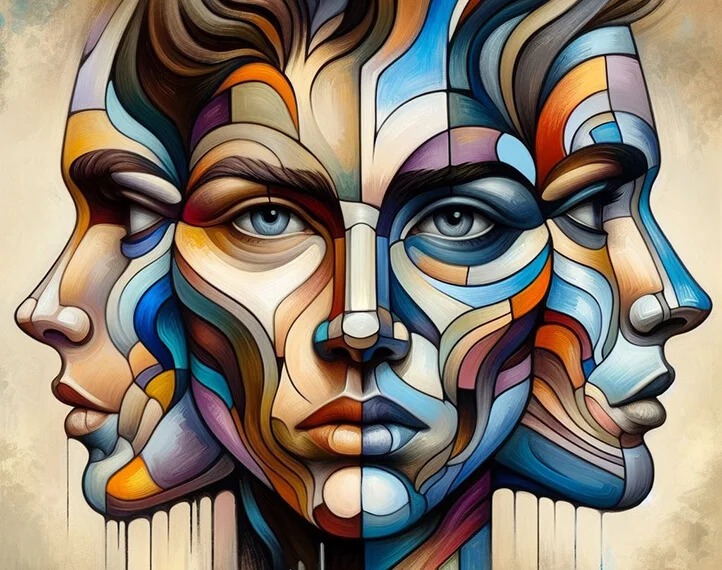
Personality Structure
One of the central questions posed by the pioneers of depth psychology was the question of the structure of human personality. How do the conscious and unconscious aspects of the psyche relate to each other? What forces govern our behavior and decision-making?
In an attempt to answer these complex questions, Sigmund Freud and other psychoanalysts proposed several models describing the structure and dynamics of personality. These theories formed the foundation of modern understanding of the human psyche.
The uniqueness of the depth psychologists’ approach was that they were the first to focus on the role of unconscious determinants in personality formation. Before them, a simplified view of humans as predominantly rational and conscious beings prevailed.
Freud and his followers argued that the core of personality consists of powerful unconscious drives, conflicts, and complexes. The conscious “Ego” is merely the tip of the iceberg, while its submerged part conceals a multitude of irrational impulses and forces that are constantly struggling with each other.
As a result, personality emerges as a complex dynamic system where various structural components, having different sources, goals, and principles, are constantly interacting and competing, defining the uniqueness of each individual.
The study of personality structure, as proposed by Freud, Jung, Adler, and other pioneers, helps to better understand the roots of our desires, emotions, motives, and behavioral patterns. By becoming aware of the inner drama of competing forces within the depths of the psyche, we gain the ability to achieve greater harmony and wholeness of personality.
The Structural Model of Personality
According to this model, personality consists of three main structural components:
- Id – The unconscious, primitive part of the psyche, the source of instinctual drives and impulses, governed by the pleasure principle. It is the repository of inherited, innate factors of human nature.
- Ego – The conscious part of the personality responsible for realistic perception of reality, decision-making, drive regulation, and adaptation to the demands of the external world. The Ego operates according to the reality principle.
- Superego – The moral values, ideals, and social norms formed during upbringing. The Superego acts as a censor and critic, controlling the impulses of the Id and striving for perfection.
These structural components are in constant dynamic interaction and conflict with each other, determining the uniqueness of each person’s personality.
Psychosexual Stages of Development
An important role in shaping the structure of personality is played by the stages of psychosexual development in a child, as outlined by Freud. At each stage, sexual energy (the life drive energy) becomes fixed on a specific erogenous zone:
- Oral stage (0-1 year) – Pleasure is associated with sucking and eating.
- Anal stage (1-3 years) – The erogenous zone shifts to the anus, and pleasure is associated with excretion and retention processes.
- Phallic stage (3-6 years) – Interests focus on the genitals, and the Oedipus complex forms.
- Latency period (6-12 years) – Sexual drives temporarily recede into the background.
- Genital stage (after 12 years) – Puberty begins, and sexual interests are directed towards the opposite sex.
Fixations and Regressions
If a significant psychological trauma or frustration of drives occurs at any stage of psychosexual development, it can lead to the fixation of libido at that stage. As a result, part of the energy “gets stuck” at an earlier stage of development.
Regression is a reverse movement of the personality towards earlier, infantile forms of behavior and satisfaction of drives under the influence of stress or internal conflict. It is a kind of defense mechanism of the psyche.
Fixations and regressions are the basis of many neurotic disorders and personal development problems. The task of psychoanalytic therapy is to help the patient become aware of and overcome these stagnant points of development.

Jungian Analysis
Although Carl Gustav Jung was a student and follower of Sigmund Freud, he eventually developed his own original view on the nature of the human psyche. Jungian analysis, or analytical psychology, became one of the most important branches of classical psychoanalysis.
Jung’s main focus was the problem of achieving psychological wholeness and integration of the personality. Unlike Freud, who emphasized infantile sexuality and drives, Jung concentrated on the exploration of deeper, archetypal layers of the human psyche.
The key concept of Jungian analysis is the notion of the collective unconscious—a universal hereditary layer of the psyche filled with universal symbols, images, and motifs. According to Jung, these archetypal structures have a fundamental impact on the formation of personality, world perception, and human behavior.
At the center of attention are such archetypes as the Anima and Animus, the Self, the Sage, the Hero, and other eternal images present in the mythology and culture of all peoples. These deep symbols express innate psychological tendencies and predispositions common to all people.
The Jungian approach opened new perspectives for the study of the human unconscious, going beyond purely individual factors and incorporating the collective cultural heritage of all humanity. Awareness and integration of archetypal contents become key to achieving psychological maturity and inner wholeness.
Thus, Jung’s analytical psychology represents an important addition and expansion of Freud’s classical psychoanalysis. It enriched our understanding of the unconscious, personal development, and the processes of individuation, laying the foundations for a deep understanding of the symbolic life of the human soul.
Collective Unconscious and Archetypes
The central concept of Jungian psychology is the collective unconscious. Jung proposed the idea of the existence of a universal, hereditary layer of the unconscious psyche filled with universal images, symbols, and motifs.
These innate psychological structures were called archetypes by Jung. They include such fundamental images as the Anima and Animus, the Self, the Sage, the Hero, the Trickster (joker, deceiver), and others. Archetypes are present in myths, legends, dreams, and fantasies of people from all cultures.
Jung believed that the interaction between the collective unconscious and an individual’s experience determines many aspects of their personality, perception, and behavior. Awareness and integration of archetypal images are essential tasks of personal development.
Anima and Animus
Two key archetypes described by Jung are the Anima and Animus. The Anima represents a set of feminine psychological traits and behavioral expressions present in the male psyche on an unconscious level.
The Animus, in turn, symbolizes masculine qualities and tendencies inherent in the female psyche. These archetypes reflect the original androgyny of the human soul.
Individuation Process
One of Jung’s main concepts is the process of individuation—the journey toward realizing a person’s true, integrated “Self.” This is a long process of integrating the conscious and unconscious aspects of the personality into a unified whole.
As individuation progresses, there is an awareness and assimilation of the contents of the collective unconscious, including archetypal images. A person learns to accept their shadow, negative traits, integrating them into the whole image of the Self—the archetype that symbolizes the fullness and uniqueness of personality.
Jung considered individuation the main goal of life, the achievement of which allows one to gain psychological maturity, inner harmony, and authenticity of being.
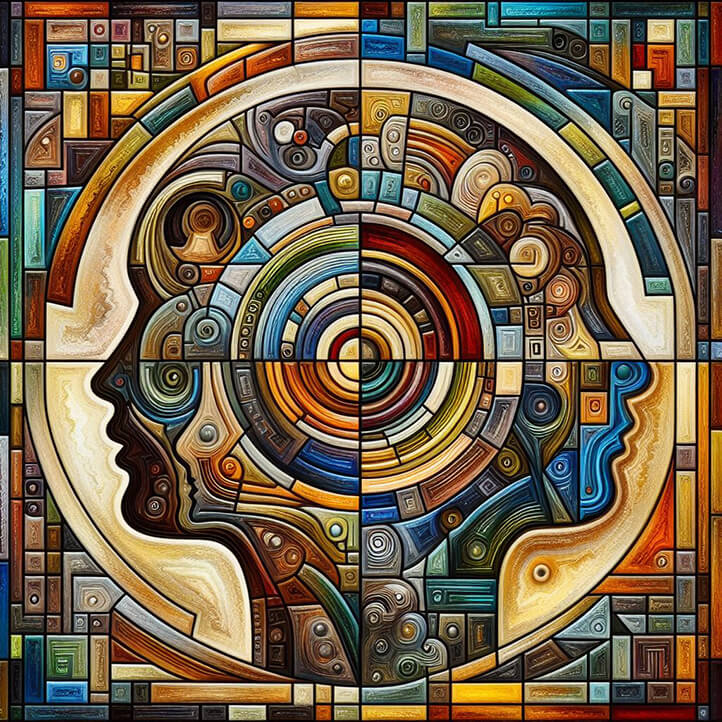
Other Directions of Depth Psychology
While Sigmund Freud’s classical psychoanalysis and Carl Gustav Jung’s analytical psychology are undoubtedly the foundational directions of depth psychology, they by no means exhaust the diversity of this vast interdisciplinary field. Throughout the 20th century, many other original approaches and schools emerged, developing and reinterpreting the ideas of the founders.
These currents, rooted in the works of the classics of depth psychology, simultaneously introduced fresh perspectives and alternative interpretations of fundamental questions of human existence. They expanded the boundaries of research, enriching our understanding of unconscious processes, personality dynamics, and paths to self-realization.
Some of these directions, such as existential analysis and logotherapy, focused on the existential aspects of human existence—the problems of freedom, responsibility, the search for meaning in life, and their impact on the psyche. Others, like transpersonal psychology, turned to the study of mystical, transcendent states of consciousness and their role in personal transformation.
Representatives of these schools critically reexamined certain ideas of Freud and Jung, offering alternative models of human psychic organization. However, they remained faithful to the fundamental principles of depth psychology—giving priority to the unconscious, taking a complex approach to personality, and paying special attention to the symbolic language of the psyche.
The diversity of trends within depth psychology demonstrates its vitality and capacity for development, even a century after its inception. It is in this diversity of approaches and the continuous search for new horizons that the strength and promise of this scientific field lie.
Existential Analysis
Existential analysis explores the fundamental questions of human existence—freedom, responsibility, loneliness, the search for meaning in life, and their impact on the psyche of the individual. The founders of this direction were Swiss psychiatrists Ludwig Binswanger and Medard Boss.
The focus is on such existential givens as the temporality of existence, the inevitability of death, guilt, fear, and other phenomena that define the true existence of a person. The therapy aims to help individuals become aware of and accept these deep aspects of existence.
Logotherapy
Logotherapy is another influential direction of depth psychology, created by Austrian neurologist and psychiatrist Viktor Frankl. Its key tenet is the individual’s drive to find and realize meaning in life.
According to Frankl, the search for meaning is the primary driving force in a person’s life, a source of mental health and personal growth. The loss of meaning, however, leads to states such as existential vacuum, noogenic neurosis, and depression.
Logotherapy employs various techniques to help the patient find personal meaning in life and realize it through values of creativity, experience, and relationships.
Transpersonal Psychology
The transpersonal direction emerged in the 1960s, focusing on the study of transcendent, mystical states of consciousness, peak experiences, and their role in personal development.
Prominent figures in transpersonal psychology include Stanislav Grof, Abraham Maslow, Ken Wilber, Roger Walsh, and others. They studied altered states of consciousness achieved through spiritual practices, psychedelics, and holotropic breathing.
According to the transpersonal approach, profound altered states provide a pathway to personal transformation, overcoming egocentrism, and connecting with higher levels of being. These experiences can catalyze spiritual growth and self-actualization.
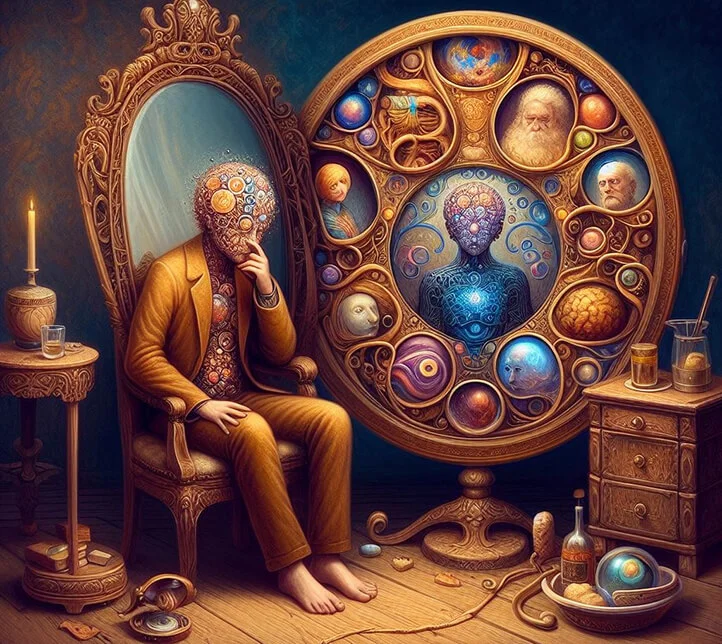
The Influence of Depth Psychology
The ideas and discoveries of depth psychology have had a truly revolutionary impact, extending far beyond the academic study of the human psyche. Its concepts have permeated many areas of human activity, from psychotherapeutic practice to art and culture.
The groundbreaking nature of depth psychology lies in its challenge to established notions of human nature. Freud, Jung, and other thinkers in this field convincingly demonstrated that much of our psychic life unfolds in the realm of the unconscious, beyond rational control.
This discovery of a vast iceberg of unconscious drives, complexes, defense mechanisms, and symbolic structures changed our understanding of personality, motivation, creativity, and many other aspects of human existence. It unleashed deep, chaotic energies of the psyche that previously had no place in the framework of strict rationalism.
After Freud and Jung, humanity was seen by science in a new light—as a complex multidimensional system driven by contradictory forces, many of which are hidden in the dark depths of the unconscious. This discovery of the “dark side” of the human psyche had enormous consequences for all fields related to the study and application of knowledge about people.
The influence of depth psychology extended far beyond the clinic and experimental laboratory. Its images, ideas, and symbolic language penetrated literature, cinema, visual arts, and public thought, forming new ways of self-expression and perspectives on human nature.
It is precisely the universal nature of the discoveries of depth psychology and its ability to shed light on various facets of human existence that account for its powerful resonance in the culture of the 20th and 21st centuries. It is difficult to find an area that has not been affected by its influence in one way or another.
Contribution to Psychotherapy
Perhaps the most significant contribution of depth psychology is to the development of psychotherapeutic methods and practices. The psychoanalytic methods developed by Freud, Jung, and their followers have laid the foundation for numerous contemporary therapeutic approaches.
The goal of psychoanalytic therapy is to help the patient become aware of hidden unconscious conflicts, repressed traumas, defense mechanisms, and patterns that hinder the full functioning of the personality. Through free association, dream analysis, transference, and other techniques, the patient gains the opportunity to work through deep problems.
Therapies such as cognitive-behavioral, gestalt therapy, body-oriented therapy, art therapy, and others owe much of their development to the principles laid out by depth psychology.
Connection with Art and Culture
The concepts and imagery of depth psychology have been reflected in literature, painting, cinema, music, and other forms of art. Writers, artists, and directors have turned to the symbolic language of the unconscious, archetypal motifs, and the issues of human existence.
There is a particularly close relationship between depth psychology and surrealist art. Surrealists drew inspiration from Freud’s work, the doctrine of the unconscious, and attempts to express its content through painting, poetry, or cinema.
In literature, the ideas of depth psychology are reflected in the works of authors such as Franz Kafka, James Joyce, Gabriel García Márquez, and many others. Cinema has also not remained untouched, actively using psychoanalytic concepts and the imagery of the unconscious.
Criticism and Modern Debates
Despite its immense contribution to understanding the human psyche, depth psychology has faced and continues to face significant criticism from other scientific fields. It is often accused of the following shortcomings:
- Excessive speculation and lack of empirical evidence, especially in Freud’s early works.
- Biological reductionism and a simplistic understanding of human nature.
- Overemphasis on sexuality and infantile drives.
- The unverifiability of many key concepts, such as the unconscious, the Oedipus complex, etc.
- Androcentrism and ignoring the specificity of female psychology.
Currently, active discussions are underway about the place and role of depth psychology in modern science. Some researchers are attempting to integrate its concepts with the achievements of neurobiology, cognitive psychology, and other fields to create a more comprehensive biopsychosocial model of the human being.
Others lean towards the idea that in its original speculative form, depth psychology is outdated and should be fully replaced by more rigorous empirical approaches. These debates continue and prompt a reevaluation of both the achievements and limitations of classical theories.
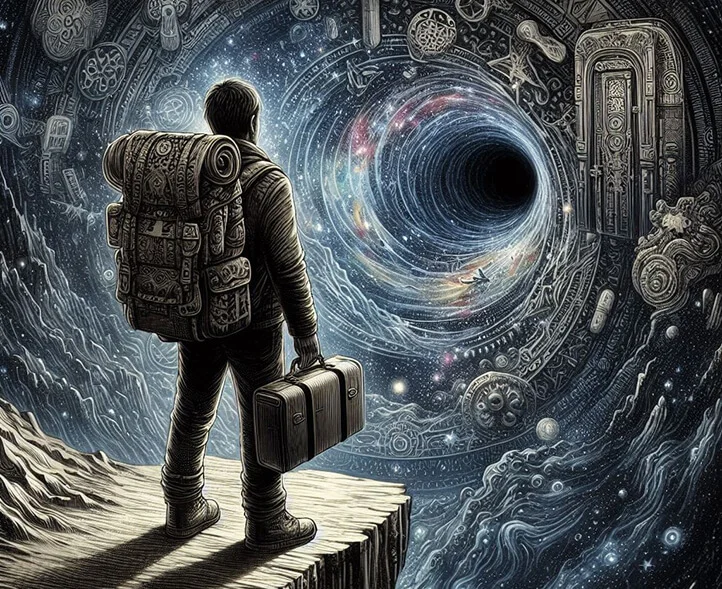
Conclusion
Depth psychology is undoubtedly one of the most influential and revolutionary fields in the study of the human psyche. Its contribution to understanding unconscious processes, the structure of personality, internal conflicts, and the driving forces of personal development is hard to overestimate.
Although some ideas and tenets of depth psychologists like Freud and Jung may today seem outdated or controversial, their works continue to inspire scholars, therapists, and cultural figures to make new discoveries and creative accomplishments.
The introduction of the unconscious concept allowed us to see human nature from a new, deeper perspective. According to depth psychology, our conscious “I” is merely the tip of a massive iceberg, while the vast majority of psychic life is hidden in the irrational depths of the unconscious. This discovery altered our views on personality, motivation, creativity, and other aspects of human existence.
The personality structure models proposed by Freud, Jung, and other representatives of depth psychology reveal the complex dynamics of interaction between different parts of the psyche—unconscious drives, conscious control, and internal social prohibitions. These theories allow for a better understanding of the origins of our desires, emotions, and behavior patterns.
Moreover, depth psychology has enriched our perception of humans with ideas about archetypes of the collective unconscious, the process of individuation, concepts of the search for meaning, and other existential questions of existence. It opened new horizons for personal growth and self-awareness.
The criticism and debates surrounding the ideas of classical depth psychology only testify to its vitality and ability to inspire the reevaluation of established views. These discussions encourage researchers to seek ways to integrate its discoveries with modern achievements in neuroscience, cognitive psychology, and other fields.
In the 21st century, depth psychology remains relevant and significant. Its language and imagery continue to nourish the creativity of artists, writers, and philosophers. Its methods are used in psychotherapeutic practice. And its ideas inspire new scientific inquiries into human nature.
Having undergone criticism and reinterpretation, depth psychology will undoubtedly continue to enrich our understanding of the mysteries of the human soul, helping us find ways to personal wholeness and genuine fulfillment of life’s purpose.
